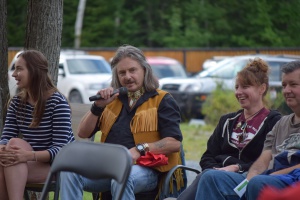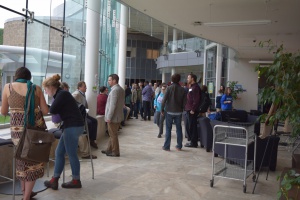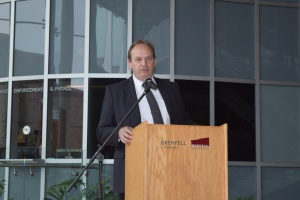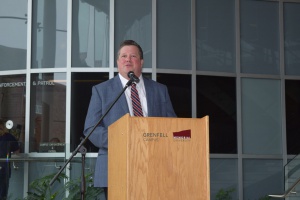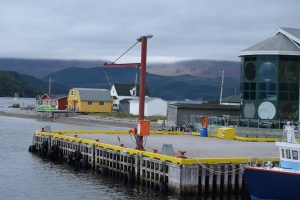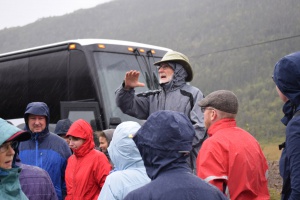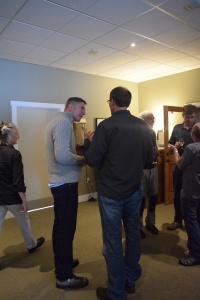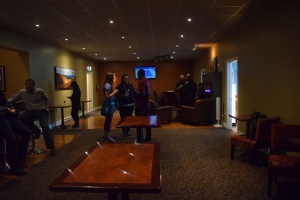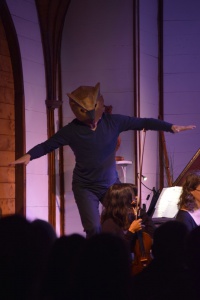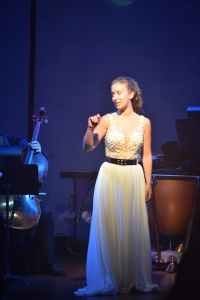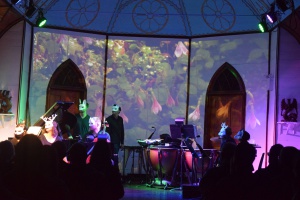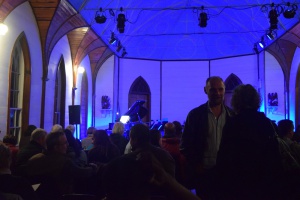The Future of Nature: Gros Morne was a transdisciplinary event in environmental science, industry, and art on the West Coast of Newfoundland, September 10–13, 2015.
Thanks to all who made The Future of Nature 2015 the huge success that it was! See below for a video by Barry Stephenson and a gallery of photos by Esther Squires.
The Future of Nature: Images and Voices
The Future of Nature: Images and Voices from Barry Stephenson on Vimeo.
Programs
The Gala Program (click to open)
The Youth Program (click to open)
Testimonials
Remarks from a few of our speakers about The Future of Nature 2015.
Professor Uwe Voigt, University of Augsburg:
“…a tremendous, fascinating and inspiring event. The conference fascinated its numerous participants by bringing together many experts from different fields and focussing their concern with one topic the importance of which is central to contemporary theoretical debates yet exceeding them by far into the dimensions of the practical and the political. This, in turn, led to very inspiring, innovative insights and perspectives for future cooperation.”
Gordon Slade, Chairman, Shorefast Foundation, Fogo Island:
“The event was exceptional in awakening and confirming the passion I have for doing my part to be nature’s friend and partner in the future.”
Professor Heather Eaton, Saint Paul University, Ottawa:
“The Future of Nature was an extraordinary trans-disciplinary event. Over four days we entered into geological, historical, intellectual, and aesthetic dimensions of the Gros Morne region of Newfoundland. With international, local and Indigenous peoples, in a mixture of intellectuals, artists and activists, we learned about the bioregion—oceans, land, forests and animals—through a creative and effective blend of academic disciplines (science, philosophy, political and religious studies) and the arts. The combination of presentations, discussions, dance, poetry, music and rituals awakens the mind, heart and body to an intense understanding of the state of nature, and inspires all to work for change. Most importantly, we were there, learning from the place: Gros Morne. This place-based multi disciplinary learning is the most effective and profound way to foster individual, social and ecological transformation.”
Ethan McGrath

Dr. Antony Berger, Earth Scientist, Woody Point, NL:
“. . . An important effort from civil society to think about and act towards the natural world in a more lasting and equitable way. The inclusion of contributions from the visual and performing arts in what otherwise would have been simply a ‘talk-fest’ was an interesting experiment, as was the involvement of people from our aboriginal community. Spending time in contemplation of and direct experience with nature . . . was one of the more memorable aspects of the September meeting. You raised the curiosity of many people who were not involved, and who have indicated to me since that they would have been interested to attend and contribute. So the news has spread!”
Professor Jens Soentgen, University of Augsburg:
“Several aspects distinguished the Future of Nature from similar events. The opportunity to meet with aboriginal elders and leaders was to me very thought-provoking, I had several discussions with them concerning their concept of nature and appreciated it very much. I also appreciated the inclusion of the performing arts, and the subsequent discussion with the artists after the performances. Without esthetic sensitivity we cannot find a way out of the environmental crisis. I enjoyed the outdoor component, as nature in Newfoundland means something completely different from nature in Middle Europe. I learned a lot from the students and from colleagues from different areas of environmental sciences, environmental humanities and philosophy.”
Professor Jason M. Wirth, Seattle University:
“What made the Future of Nature so special is that it acted on behalf of the vanishing biodiversity of the earth by re-activating and re-deploying the repressed diversity of cultural life. Many modes of disclosure and avenues of address and action were explicitly put into play: philosophical discourse, artistic performance, scientific analysis, political action, economic creativity, indigenous wisdom, and spiritual renewal, in a manner that was as inclusive as it could be, inviting local communities to interact with people from all age groups and all walks of life. The problems that we face are huge, and they demand big-hearted and broad-minded action. The Future of Nature was revolutionary in this respect . . . not only a life-changing and awakening experience, but also a genuine glimmer of hope.”
Photos from September 10
The Aboriginal Sharing Circle at Marble Inn Resort, and the barbeque afterwards.
Photos from September 11
Opening ceremonies and Session 3 at Grenfell Campus, Corner Brook, and the Evening Gala in the Fine Arts Theatre.
Photos from September 12
Arrival at the Bonne Bay Marine Station at Norris Point in Gros Morne National Park, the water taxi to Woody Point, the Tablelands Hike, the Bonne Bay Inn, and “The Muscle We Long With” performance at St. Pat’s Church.
Photos from September 13
Talks at the Bonne Bay Marine Station and the Western Brook Pond hike and boat tour.
Future of Nature 2015 Sponsors










